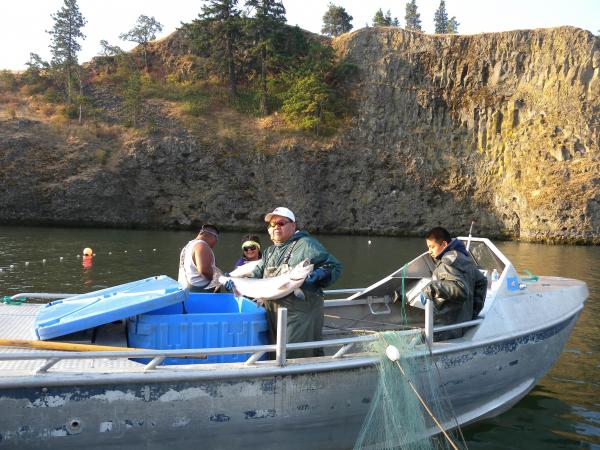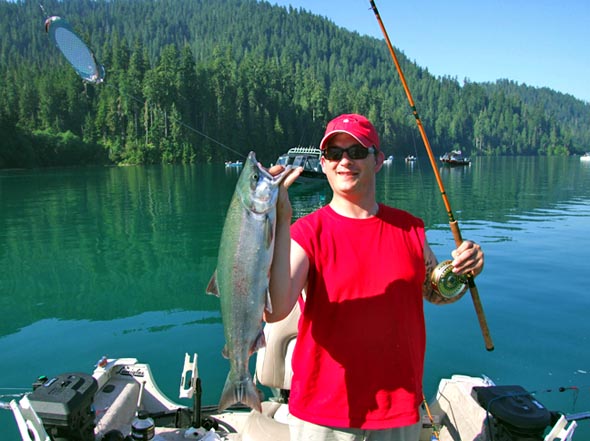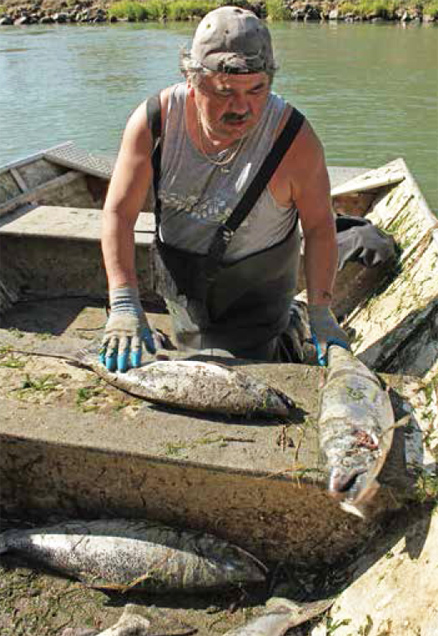By Bill Sheets, The Herald
EVERETT — While a decision on whether tidal power turbines may be installed in Admiralty Inlet has been delayed in part by the federal government shutdown, sparring between the proponent and opponents has continued.
The Federal Energy Regulatory Commission had planned to decide whether to approve the Snohomish County Public Utility District’s $20 million tidal power pilot project as early as this past summer, but now it will likely wait at least until December, according to the utility.
The federal energy agency has been awaiting a report on the project from the National Marine Fisheries Service. Completion of that report came later than expected and has been further delayed by the government shutdown, PUD officials said.
The tidal power plan has faced stiff opposition from Pacific Crossing of Danville, Calif., which owns two transoceanic cables that run through the inlet between Whidbey Island and Port Townsend.
Four Indian tribes, including the Tulalips, also say the project could affect salmon migration and fishing.
Officials with the PUD say the concerns either are unfounded or have been addressed. A 215-page environmental study issued last year by the FERC concluded that the turbines pose no threat to the cables, wildlife habitat or fishing.
Under the plan, two 65-foot-tall turbines, each resembling a giant fan sitting on a tubular platform, would be placed 200 feet underwater to capture the current. The turbines are made by OpenHydro of Ireland.
At peak output, the turbines are expected to generate 600 kilowatts between them, enough to power 450 homes. Most of the time, the output will be less, PUD officials say. This would be a demonstration project intended to determine whether more turbines could be effective in the future, officials say.
The cables, only a couple of inches in diameter, contain fiber-optic lines that transmit data through the Internet and social media, said Kurt Johnson, chief financial officer for Pacific Crossing. The lines are encased in steel and polypropylene.
The cable network extends a total of more than 13,000 miles in a loop from Harbour Pointe in Mukilteo to Ajigaura and Shima, Japan, and Grover Beach, Calif.
The turbines would be placed about 575 feet and 770 feet from the cables. Pacific Crossing and its trade group, the New Jersey-based North American Submarine Cable Association, say the standard should be around 1,600 feet.
Pacific Crossing has submitted several more sets of comments to FERC since last winter.
The cable interests believe the lines could be damaged by placement of the turbines or by boats dropping anchors in the area.
“Our ultimate concern is the adequate and safe separation of the turbines from our cables,” Johnson said. “We’re kind of concerned this project will become a precedent for authorizing projects such as this at an unsafe distance from submarine cables.”
The company pointed out that an agreement between utilities and cable companies in the United Kingdom established 500 meters — about 1,600 feet — as the minimum distance between offshore wind farm turbines and undersea cables.
On its website, the cable association says that although the agreement pertains to wind projects, the agreement could be applied equally to tidal and wave energy projects.
Officials with the PUD disagree.
“The bottom line is it’s an apples and oranges kind of thing,” said Craig Collar, assistant to PUD general manager Steve Klein.
The PUD earlier submitted to the federal agency a list of precautions that crews would take when operating near the turbines. For example, boats would stay running when in the area to eliminate the need for dropping an anchor, Collar said.
On the issue of turbine placement, OpenHydro officials have told those at the PUD that they can get the turbines within 10 feet of their target locations, Collar said.
In response to the environmental study, the Tulalip Tribes, the Suquamish Tribe and the Point No Point Treaty Council, representing the Port Gamble and Jamestown S’Klallam tribes, each sent letters disputing its conclusions.
Fishing gear could get hung up in the turbines, and the structures could potentially harm migrating salmon, said Daryl Williams, environmental liaison for the Tulalip Tribes.
Tribes fish for halibut, crab and shrimp in the area, he said.
“We’ve already lost most of our fishing area due to shipping traffic and piers and anchor buoys and the other things that get in the way of drift gillnets,” Williams said.
The turbines take up but a tiny part of the large inlet, Collar said.
“This project is so small, it doesn’t in any material way impede the tribes’ fishing rights,” he said.
Williams said the very conditions that determined the placement of the turbines — strong currents — could steer migrating salmon into the turbines. Chinook salmon and sturgeon travel as deep as 150 feet below the surface, he said.
“When the fish are migrating, they travel with the current so they don’t burn much energy while swimming,” Collar said. “We don’t think the studies are going to identify what the impacts are to migrating fish.”
The PUD is working with the University of Washington on state-of-the-art sonar equipment and underwater cameras that will be deployed to monitor fish passage near the turbines.
The tribes are skeptical, Williams said.
“Our fish are already in bad shape in the Puget Sound area and we’re throwing in one more obstacle to recovery.”














